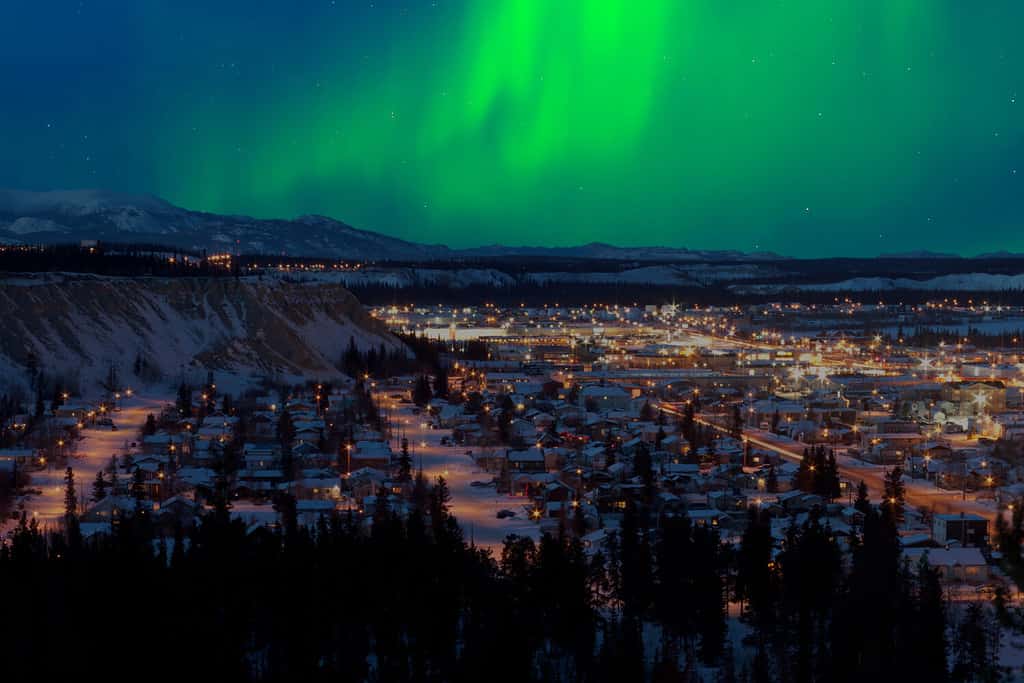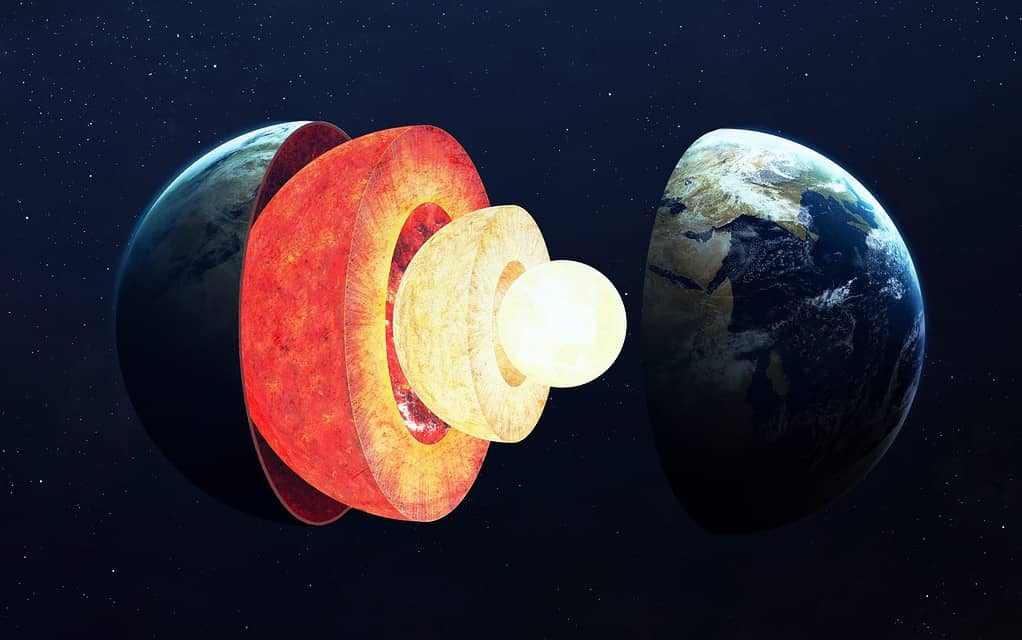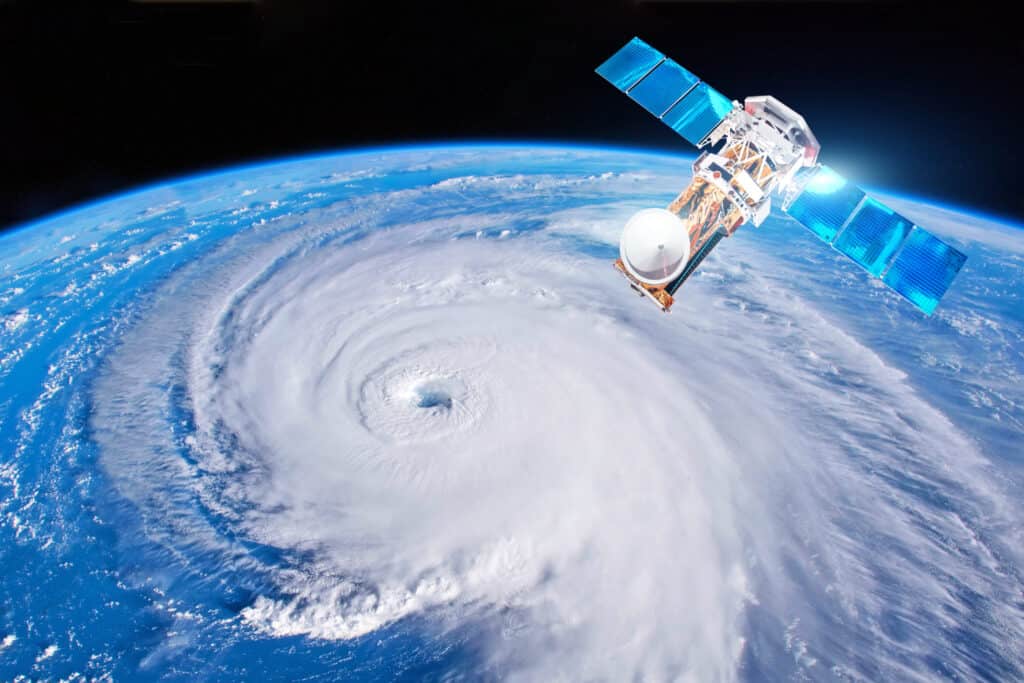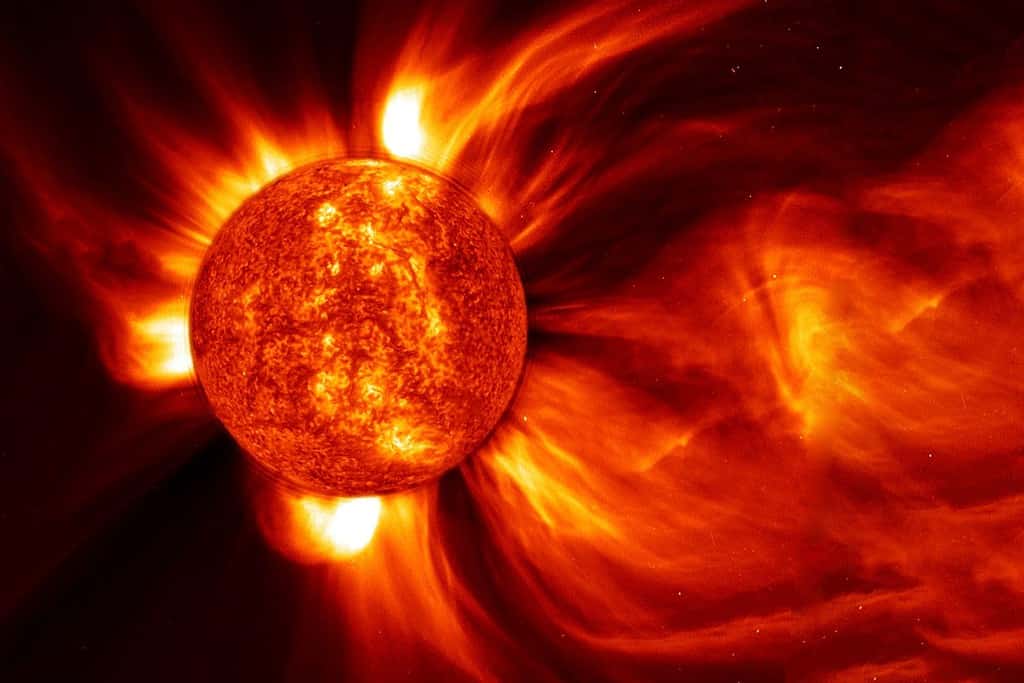You probably haven’t thought much about the Earth’s magnetic field. A lot of people aren’t even aware we have one. But without it, the planet would be awash in radiation that would make life on Earth impossible. Something strange happens approximately every 300,000 years: the magnetic poles flip. North and South swap places so that compasses would point South instead of North. What other effects would accompany this change? We may find out because scientists think it is about to happen again.
Why Does Earth Have Magnetic Poles?

Auroras are shimmering curtains of light caused as charged solar particles fall to Earth along magnetic field lines near the north and south poles.
©Pi-Lens/Shutterstock.com
To understand magnetic poles we need to understand what is inside the Earth. At the center is a 758-mile (1,220 km) diameter solid core made mainly of iron. It rotates in the middle of the outer core, a 1,367-mile (2,200 km) thick layer of molten liquid iron and nickel. Convection currents in this superheated zone generate the Earth’s magnetic field.
Magnetic field lines extend from the interior of the planet out into space about 37,300 miles (60,000 km) in the direction of the sun, but more than 186,400 mi (300,000 km) in the opposite direction. This bullet-shaped magnetic field, called the magnetosphere, gets its shape from the pressure of solar radiation. The most important function of the magnetosphere is to deflect and trap solar radiation so that it doesn’t reach the Earth. Some particles do get through, though. These are visible in the north and south polar regions as auroras.
Why Do The Magnetic Poles Flip?

Earth’s magnetic field, and its reversals, result from the movement of molten rock beneath the surface.
©Vadim Sadovski/Shutterstock.com
Geologists can tell that the Earth’s magnetic field has reversed by examining iron, nickel, and a few other ferromagnetic rocks. As these cool, their crystals orient in such a way as to show the direction of the field. The geologic record shows that the field reverses approximately every 300,000-500,000 years, on average. It has been about 780,000 years since it last reversed. Judging from the behavior of the magnetic field, some scientists think another reversal might happen sometime within the next 1,500 years. The actual process of reversal is not sudden; it could take 1,000 years or more to complete.
What causes such a reversal? It’s not exactly clear. Some geologists think it is related to the subduction of continental plates. Slabs of a continent pulled down into the outer core may force some ferromagnetic materials to orient themselves in the opposite direction of those around them, leading to a chain reaction. Or there are simply some internal dynamics that are not yet understood that cause this result.
What Would Be the Effects of a Reversal?

Butterflies are among the many species that use the Earth’s magnetic field to navigate.
©Dotted Yeti/Shutterstock.com
How could a reversal in Earth’s magnetic field affect people and wildlife on the planet? A lot depends on how fast it happens. Many scientists believe it would be a process of a gradually weakening magnetosphere that finally reverses direction. This would give wildlife and people time to adjust to the change. If it were to happen suddenly, as some suggest it could, these would be some of the ramifications:
- Compasses would point South instead of North.
- Migrating animals like fish, butterflies, whales, and birds that use the magnetic field to navigate would become disoriented. This would disrupt their migration and ability to find their breeding grounds.
- During the transition, the field would weaken and allow more radiation through. This could fry satellites, knocking out communication, GPS signals, weather monitoring, and military surveillance.
- On Earth, radiation could cause regions of the planet to be uninhabitable. Currently, there is a weak point in the field over South America.
- The electrical grid could also be disrupted, causing blackouts and the need for repairs to restore electric power.
- Electric cars, computers, phones, and anything else with electronic components could become useless either from radiation or from the loss of satellite access.
How Worried Should You Be?

Disruption of satellites and all the information and communication they provide is a possible result of a reversal of the polarity of the magnetosphere.
©aappp/Shutterstock.com
Although the effects of a magnetic field reversal could produce global chaos, it is probably not the most important thing to worry about in your lifetime. There are far more pressing threats from perennial natural disasters like storms and human activities like pollution and warfare. If a reversal does happen, it may be hundreds or even thousands of years from now when human technology will have changed substantially. However, some national- and individual-level precautions are reasonable because they can also protect from multiple threats that are more likely than a sudden magnetic field reversal.
National Preparedness

Preparations for a magnetic field reversal could also help protect vital systems from a solar storm or EMP attack.
©Artsiom P/Shutterstock.com
At the national level, governments can work on ways to shield satellites and the electric grid from disruption by radiation. These crucial systems are vulnerable to disruption not only from a magnetic field reversal but also from solar flares and EMP (electromagnetic pulse) effects from nuclear detonations or high-tech weaponry specifically designed for that purpose.
Individual Preparedness

Keeping some non-perishable food and other disaster supplies on hand is a reasonable precaution for a wide range of natural disasters that may disrupt supply networks.
©Fevziie/Shutterstock.com
Individuals would do well as a general practice to keep a couple of weeks’ worth of non-perishable food and bottled water. Again, not just for the unlikely circumstance of living through a magnetic field reversal, but as a safeguard against natural disasters or deliberate sabotage that might disrupt essential supplies. We don’t need to waste our time worrying; just do what is under our control to be reasonably prepared for the most likely scenarios.
The photo featured at the top of this post is © Triff/Shutterstock.com
Thank you for reading! Have some feedback for us? Contact the AZ Animals editorial team.






